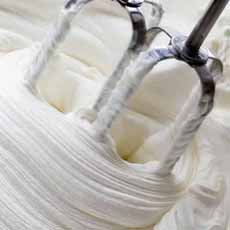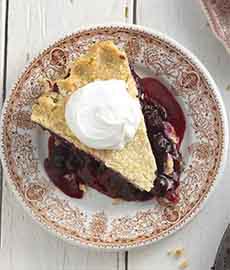FOOD HISTORY: Whipped Cream
|
May 21st is National Strawberries and Cream Day, a dish that no doubt dates to a prehistoric day at the dawn of dairying, when fresh cream was poured over the wild strawberries of summer. Milk-producing animals have been domesticated for thousands of years, long before the ancient Egyptians believed that cows and bulls were earthly manifestations of their gods. They bred cows for milk and the cheese it yielded, as well as for meat and as field animals, to work the fields and power grain mills and irrigation works. The strawberry was mentioned in ancient Roman literature, in reference to medicinal use (it was used to treat depression!). It took until the 1300s for the French to realize its potential; in the 1300s, they replanted wild berries that grew in forests, in their gardens. Charles V, France’s king from 1364 to 1380, had 1,200 strawberry plants under cultivation in his royal garden. By the 16th century, strawberries and cream took advantage of the newly popular whipped cream, often sweetened for desserts. It was called milk snow in English, neve di latte in Italian and neige de lait (milk snow) in French. The French term crème fouettée, whipped cream, appeared in print in 1629, and the English “whipped cream” in 1673. The term “snow cream” continued in use through the 17th century. In early recipes through the end of the 19th century, naturally separated cream was whipped, typically with willow or rush branches. The resulting foam on the surface was skimmed off and drained, a process taking an hour or more, and was repeated until enough cream had been skimmed. (We’d never complain about hand-whipping with an electric mixer!) Some people use the terms crème Chantilly and whipped cream interchangeably. But there is a difference: †The name Chantilly (pronounced shon-tee-YEE) was probably chosen because the Château de Chantilly in northern France had become known for its refined cuisine. There is no evidence that it was invented there, although its creation is often credited, incorrectly, to François Vatel, maître d’hôtel at the Château in the mid-17th century. The terms “crème Chantilly,” “crème de Chantilly,” “crème à la Chantilly” and “crème fouettée à la Chantilly” only become common in the 19th century. |
 [1] Strawberries and whipped cream (photo © Studio Barcelona | Fotolia).
|
|
|
|
||


